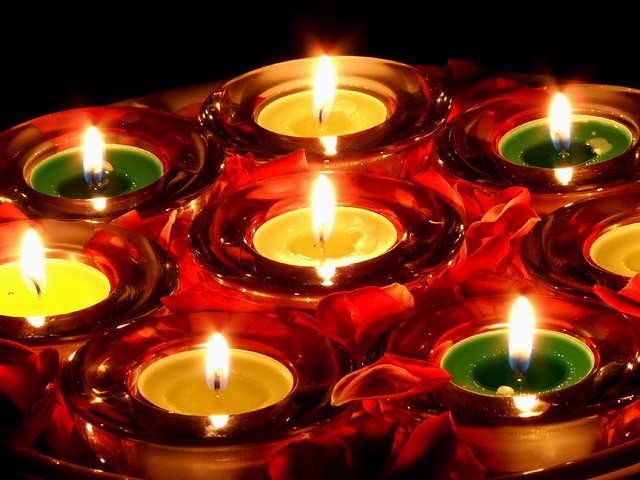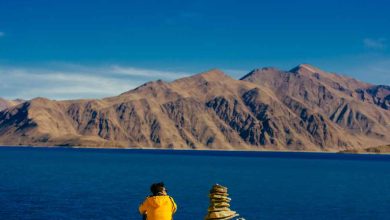Diwali or Deepavali is a celebration that brings the light of hope and positivity. This Festival of Lights fills one’s heart with immense happiness! ‘Diwali’ is the more commonly used modern term, while ‘Deepavali’ is the traditional Sanskrit term for the festival. The word Deepavali comes from the Sanskrit which means rows of lights. That is the reason why people light up their homes and workplaces with earthen lamps or electrical lights during the festival. Diwali Festival 2025 is going to last for five days during the Hindu lunisolar month Kartika.

Want to know more about the Diwali Festival 2025? Here’s everything to know about the festival, how it is celebrated, and the prayers and practices!
When is Diwali 2025?
According to the Hindu calendar, Diwali is ideally celebrated on the 15th day of the Karthik month on an Amavasya. The exact date of Diwali 2025 will be Monday, 20th October 2025.
History and Significance of Celebrating Diwali Festival
There are several stories associated with the festival of lights – Diwali. According to the Hindu epic, Ramayan, it is believed that the people of Ayodhya hailed the homecoming of Lord Ram, Goddess Sita, Lakshman, and Hanuman after a 14-year exile by illuminating the streets with earthen lamps. It was the darkest night in the Hindu lunisolar calendar’s Kartik month.
Since then, every year Diwali festival has been observed on Amavasya (no moon night) when people illuminate their homes and workplaces with ‘diyas’, to expel darkness. As per the Skanda Purana, the Diyas or the earthen lamps symbolise the Sun as the cosmic giver of light and energy.

It is also believed by many Hindus that Goddess Lakshmi who is the Hindu Goddess of wealth and good fortune, was born during the Samudra Manthan (churning of the cosmic ocean) on the day of Diwali. And that’s why Goddess Lakshmi is worshipped on the day of the Diwali Festival. Lord Ganesha is also remembered and worshipped during the Diwali Function as he is a symbol of new beginnings.
Additionally, the Diwali festival marks the death and defeat of demons like Ravan by Lord Ram, Narkasur by Lord Krishna, and the arrogant Bali by Lord Vamana. And that’s why the Diwali festival is celebrated every year to mark the victory of good over evil, knowledge over arrogance, and light over darkness.
The three minority religions in India namely, Sikhs, Jains and Buddhists have their own stories related to the Diwali Festival 2025. Sikhs believe that Diwali commemorates the release of their 6th Guru, Guru Hargobind after 12 years of imprisonment. Jains, who share many beliefs of Hinduism, will observe the Diwali Festival 2025 as the day when Lord Mahavira reached nirvana. For Buddhists, Diwali was the day when Hindu Emperor Ashoka converted to Buddhism.
What Happens During the 5-Day Celebration of Diwali Festival 2025 in India?
The festival of lights is celebrated by more than a billion people of all faiths and features prayer, feasts and fireworks. As the stories and legends of Diwali Festival 2025 differ from region to region and culture to culture, the rituals and ways in which this festival is celebrated also differ. However, one thing is common across traditions, i.e., the feast of sweets, family gatherings, and the lighting of diyas that symbolise the brightness that shields each household from spiritual darkness.

In India, the Diwali festival 2025 will be observed for 5 days and each day of Diwali Function has a unique significance. Check them out here –
| 5 days of Diwali | |||
| 1st Day | Saturday | Dhanteras | 18th October |
| 2nd Day | Monday | Narak Chaturdashi | 20th October |
| 3rd Day | Monday | Diwali | 20th October |
| 4th Day | Wednesday | Govardhan Puja | 22nd October |
| 5th Day | Thursday | Bhai Dhooj | 23rd October |
Timings and Muhurat of Diwali 2025
The most auspicious time for Lakshmi Puja during Diwali 2025 falls between 5:52 PM and 8:24 PM on October 21st. This year, the festival begins with Dhanteras on October 18th and is followed by Choti Diwali (Narak Chaturdashi) on October 20th, with a two-day interval in between. Below are the detailed timings and muhurat for each day of the Diwali 2025 celebration:
| 18th October | Dhanteras Puja | Trayodashi Tithi: Begins at 7:21 PM Puja Muhurat: 6:30 PM – 8:13 PM |
| 20th October | Narak Chaturdashi | Chaturdashi Tithi: Begins at 1:51 PM on 19th Oct Ends at 3:44 PM on 20th Oct |
| 20th October | Lakshmi Puja | Amavasya Tithi: Begins at 3:45 PM on 20th Oct Ends at 5:55 PM on 21st Oct Pradosh Kaal Muhurat for Puja: 5:52 PM – 8:24 PM (on 21st October) |
| 22nd October | Govardhan Puja | Pratipada Tithi: Begins at 1:24 PM on 21st Oct Ends at 3:46 PM on 22nd Oct Puja Timing: Early morning, 6:34 AM – 8:46 AM |
| 23rd October | Bhai Dooj | Begins at 3:46 PM on 22nd Oct Ends at 6:16 PM on 23rd Oct Tilak Muhurat: 1:10 PM – 3:22 PM |
18th October – Dhanteras
The first day of Diwali is known as ‘Dhanteras’ or ‘Dhantrayodashi’, which sets the mood for the beginning of the Diwali celebration. Dhanteras consists of two words, ‘Dhan’ meaning wealth and ‘teras’ meaning thirteen i.e., the thirteenth lunar day of Krishna Paksha (dark fortnight). On this day, people worship Lord Dhanwantari, who is also associated with Ayurveda and various healing practices. People also purchase utensils, jewellery or any other item for the household.
20th October – Narak Chaturdashi
The second day of the Diwali festival is called Narak Chaturdashi. This day signifies the triumph of Lord Krishna or Mahakali over a ferocious demon, Narakasur. On this special occasion, people worship Mahakali or Shakti and thus this day is also referred to as Kali Chaudas. It’s the perfect time to abolish laziness and evil which disturbs human life on Earth.
The celebration of this festive day is marked by using fragrant oils, sandalwood and flowers in the house to keep the vibrations uplifted. People in various parts of the country also make artistic patterns of ‘rangolis’ on the floor with coloured sand, powder, rice or flower petals.
People often ask the question – what oil is traditional when lighting lamps in honour of Diwali and Narak Chaturdashi? While most of us use mustard oil to light the lamps, it is said that using cow ghee will draw the attention of Lord Krishna, seeing how the cows were his best friends!
20th October – Diwali Lakshmi Pooja
The third day of the Diwali festival, i.e., Lakshmi Puja, holds the utmost significance. The most festive day of the five days which is celebrated with vibrance and great enthusiasm around the country.

Lighting of Diyas
Grand celebration is observed on this day marked by many diyas or clay lamps illuminating every nook and corner of houses and shops, beautiful rangolis, and flowers decorating the main entrance of the houses, and fireworks dotting the sky. On this occasion, all family members worship Goddess Lakshmi along with Lord Ganesha and Goddess Saraswati seated next to her. It is followed by prasad distribution.
Children gather in their residential societies for group activities and spend quality time with their families and friends. Various events are organized during Diwali. There are Diwali Festival drawing competitions to keep the kids engaged while the elders are preparing for the puja.
Diwali is also considered to be the most auspicious day for traders and merchants’ families as they offer prayers to Goddess Saraswati, the giver of music, literature and wisdom and Kubera, the lord of wealth. This day also marks the first unofficial day of the financial new year for Indian Businessmen.
Some also love to spend the festival at dedicated Diwali vacation destinations.
22nd October – Govardhan Pooja
On the fourth day of this five-day Diwali festival, Govardhan Puja is performed. This day has a story associated with it. The story of Gokul when Lord Krishna saved the villagers from the wrath of Lord Indra by lifting the Govardhan mountain.
On 22nd October, devotees observe fast, worship and offer food and sweets to Lord Krishna along with cows and calves. People celebrate by visiting temples, wearing new clothes and jewellery and distributing sweets and gifts among friends and neighbours.
23rd October – Bhai Dooj
The fifth day of the Diwali festival is Bhai Dooj. This day is solely dedicated to the bond of love and trust between a brother and a sister. The festival carries the legendary tale of the strong brotherly affection between Lord Yama and his sister Yami.
On this day, people observe a fast followed by aarti, applying a ‘teeka’ of rice and vermilion on the brother’s forehead and partaking of sweets. The brother promises to protect his sister while the sister prays for her brother’s long life. All five days of the Diwali festival celebrate human bond and inculcate feelings of truth, love, brotherhood and the divine light of oneness in all of us.
How to do Diwali Puja in 2025?
Diwali Puja is celebrated to seek blessings from Goddess Lakshmi, who symbolizes wealth and prosperity, and Lord Ganesh, known for wisdom and removing any obstacles. While customs may vary across regions, certain practices are widespread:
House Cleaning: A clean and orderly home is believed to attract Goddess Lakshmi. Hence, people start tidying their homes, often even repainting, a month before Diwali.
Puja Area Preparation: Many Hindu homes have a designated space for worship, which is thoroughly cleaned and adorned for the Lakshmi Puja. Idols of Lord Ganesh and Goddess Lakshmi are placed here.
Decorating Homes: People make their homes more inviting by making colourful rangolis, and hanging posters and banners with symbols “Shubh” and “Labh”.
Puja Thali Preparations: The puja thali is assembled with items like flowers, a bell, kumkum, incense sticks, raw rice, red thread, and prasad (a sacred offering). Another thali may hold diyas (lamps) — traditionally fueled by mustard oil.
Kalash Placement: A Kalash (sacred pot) is filled with water, topped with a coconut and surrounded by mango leaves.
Aarti Recital: The puja begins with the Ganesh aarti, performed by circulating the puja thali clockwise and ringing a bell. After honouring Lord Ganesh, the Lakshmi aarti is similarly recited.
Deity and Diya Worship: Red vermilion (kumkum) and rice are applied to the foreheads of the deities, who are then adorned with flowers and offered prasad. This is also done to the diyas.
Asking for Blessings and Celebration: The puja concludes by seeking blessings from Lord Ganesh and Goddess Lakshmi. Diyas are placed around the home, in outdoor areas and on the rangolis. Celebrations involve visiting loved ones, sharing sweets, exchanging gifts, and for those who choose, lighting eco-friendly fireworks.
Diwali Festival 2025 Celebration in Various Parts of India-
Diwali Festival 2025 is the best occasion to bring home joy, love and merriment. As children, we used to jump with excitement whenever we heard about the Diwali celebration in school. The uniforms were forgone and we dressed up in colourful ethnic wear. Some of us would even put in more effort and dress up as deities! Diwali celebration in school was all about burning crackers, lighting diyas, making rangolis and chasing away the darkness from one’s life.

Diwali now is celebrated in a much different way. While the burning of diyas, dressing up and joining for the Lakshmi Puja is still majorly done but burning of crackers is significantly reduced due to environmental concerns. People have mostly opted for either not burning crackers or burning green crackers. Let us now see how Diwali is celebrated across the country.
North India
In places such as Ayodhya and Varanasi in Uttar Pradesh, the Diwali Festival 2025 will be celebrated more enthusiastically and vibrantly than in any other North Indian city. Considering the opening of the Ram Mandir in Ayodhya in 2025 people from all over the country will definitely visit these locations to witness their extraordinary Diwali processions. Various grand events including laser show, fireworks and lighting of up lakhs of earthen lamps on the banks of the rivers Ganga and Saryu.

People worship by being a part of the Ganga Maha Aarti. People in the Braj region of North India believe that Lord Krishna destroyed the evil Narakasura on Diwali, and in Punjab, Diwali marks the beginning of winter. Sikhs observe ‘Bandi Chhor Diwas’ on the same day. It commemorates the day of the sixth Guru of Sikhs, Guru Hargobind, released from Gwalior Fort, who had been imprisoned by Mughal Emperor Jahangir. The Golden Temple is decorated with thousands of earthen lamps and langer (free food) and prasad are also organized for the devotees.
East India
People of East India, especially in West Bengal, dedicate the night of the Diwali Festival 2025 to worship the fierce Kali avatar of Goddess Durga as Diwali coincides with Kali Puja.

In parts of old Kolkata, households are decorated with handmade paper lanterns and light up 14 earthen lamps in honour of their ancestors. The day before the Kali Puja people eat ‘choddo shaak’- a seasonal mix of 14 leafy vegetables and medicinal plants. In Odisha and West Bengal, people go pandal hopping- visiting marquees housing idols of the Goddess Kali in neighbouring houses.
West India
In the western part of India, the Diwali festival 2025 will be celebrated in several different ways. In Gujarat, various preparations are made for holding Lakshmi Puja, and Diwali marks the end of the traditional year for the Gujarati community. The fifth day after Diwali, or the day of Labh Pancham, marks the start of business for the New Year. In Maharashtra, the Diwali Festival 2025 celebration begins with Vasu Baras. Maharashtrians celebrate Dhantrayodashi and Narak Chaturdashi in place of Dhanteras and Choti Diwali. They too worship Goddess Lakshmi and also observe Diwali Cha Padva, which celebrates the bond of marriage. The festivities conclude with Bhaav Bij with the commencement of the wedding season or Tulsi Vivah.

The main attraction of the Diwali Festival 2025 Celebration in Mumbai, Maharashtra is the colourful lanterns or Kandeels that are used to decorate the houses there. No other state in the country observes Narak Chaturdashi the way Goa does. Before being burnt, Narakasur effigies are paraded around the streets. Even competitions to award the best imaginative effigy are held.
South India
Narak Chaturdashi (that’s actually Choti Diwali in the northern states) is the most important day in the Diwali Festival 2025 celebration in the southern states of India. In Tamil Nadu, people begin their day by taking an oil bath before sunrise and performing various rituals like lighting the kuthi vilaku (lamp) and offering ‘naivedyam’ (food) to deities.

In front of houses in South India, Kolam (a mixture of rice powder and chalk) is painted. The people there even prepare an Ayurvedic medicine called ‘lehyam’ for indigestion that people may suffer from during the 5-day-long festivities.
If you’re planning a trip, do book Treebo hotels by Treebo Club, which are located at different places across the country.
Over the years, the Diwali Festival 2025 has become India’s greatest festive season, which is celebrated with great ardour and liveliness. Even though it might stand for different ideologies and rituals associated with it, the feeling of togetherness and light continues to pertain. So this Diwali Festival 2025, bring out the good in yourself and spread hope, light and positivity around to keep the spirit of happiness and ‘Dharm’ alive.



